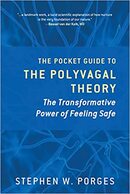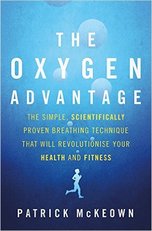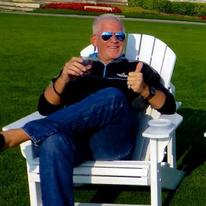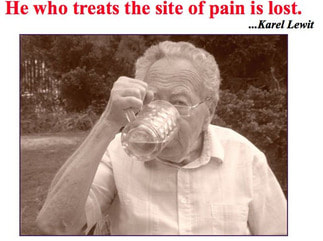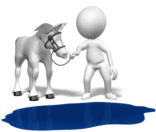
Where it is...it ain't... George Goodheart
|
|
...where arthropathy meets neuropathy...
The spinal pathology visible in these MRI's and dissections on the right allows one to appreciate the capacity of the articular lesion to encroach on associated spinal nerve tissue altering CSF flow and increasing risk of eventual motor and sensory compromise. With skilled management in the clinic and correct management at home even extremely complicated lesions can dis-inflame and heal with eventual resolution of symptoms. |
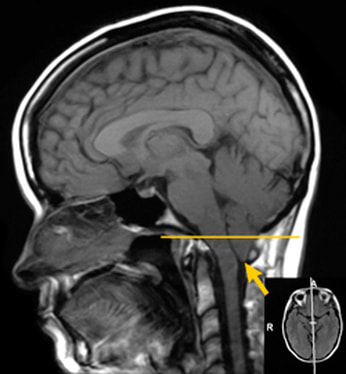 Chiari I malformation post trauma. The yellow arrow indicates the cerebellar tonsil hernated via the foramen magnum. Normally it remains above the yellow horizontal line.
Chiari I malformation post trauma. The yellow arrow indicates the cerebellar tonsil hernated via the foramen magnum. Normally it remains above the yellow horizontal line.
The cranio-cervical syndrome is a not so rare neurological disturbance after a whiplash or whiplash type injury that later, usually after several years post trauma becomes profoundly symptomatic.
The cranio-cervical syndrome secondary to Chiari malformation is a condition where the cerebellar tonsils protrude from the cerebellum into the foramen magnum. This can cause various neurological and physiological dysfunctions. The extrusion of the tonsils can compress the neural tissues or otherwise take up too much space and hinder their function. In addition, this may decrease the flow of Cerebro Spinal Fluid, flowing out of the ventricles which bathes the brain and spinal cord. As there is no blood circulating in the inside of the brain and spinal cord, the cerebral spinal fluid provides nutrients to this area. When the tonsils begin to drop or extrude, it clogs CS fluid flow like a cork in a bottle. This decrease in fluid movement to the brain and rest of the spinal cord may also prevent the nerve tissues from receiving nutrients needed resulting in symptoms. This is in addition to possible ongoing physical irritation and hypersensitivity do to these tissues crowding into a small space. The diagnosis and treatment of Chiari malformation remains controversial, especially since it often accidentally discovered in an MRI performed for cervical neck pain and / or headache.
The cranio-cervical syndrome secondary to Chiari malformation is a condition where the cerebellar tonsils protrude from the cerebellum into the foramen magnum. This can cause various neurological and physiological dysfunctions. The extrusion of the tonsils can compress the neural tissues or otherwise take up too much space and hinder their function. In addition, this may decrease the flow of Cerebro Spinal Fluid, flowing out of the ventricles which bathes the brain and spinal cord. As there is no blood circulating in the inside of the brain and spinal cord, the cerebral spinal fluid provides nutrients to this area. When the tonsils begin to drop or extrude, it clogs CS fluid flow like a cork in a bottle. This decrease in fluid movement to the brain and rest of the spinal cord may also prevent the nerve tissues from receiving nutrients needed resulting in symptoms. This is in addition to possible ongoing physical irritation and hypersensitivity do to these tissues crowding into a small space. The diagnosis and treatment of Chiari malformation remains controversial, especially since it often accidentally discovered in an MRI performed for cervical neck pain and / or headache.
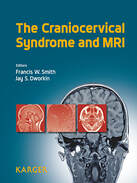
References:https://www.karger.com/Article/Abstract/365470
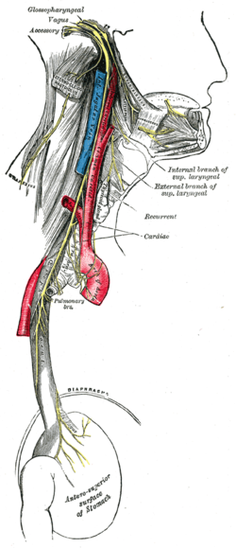
The Polyvagal theory of Porges is the theme of the physiological resonance of social life, where the interaction of mind and body are not deemed to be related in a correlation but are considered the same thing as seen from two different profiles. The central point is that when we are in a stressed and defensive physiology, it becomes difficult in terms of metabolic processes activate physical healing. This means that emotional well-being has an essential role in physical healing because negative emotions trigger a reaction at the physiological level that interferes with the metabolism of recovery of the pathology.
The vagus nerve plays a central role in the theory, it allows communication between the periphery of the body and the brain. The theory proposes three Polyvagal hierarchical systems in response to environmental stimuli. The first level consists of the autonomic nervous system. Then there is a threshold that regulates pain perception and which can eliminate the perception of pain itself when it exceeds a certain threshold.
What we need to understand, Porges says, is that any process of care, physical and psychological, requires a good level of mutual relations and the feeling of being safe.
The problem is that, while the autonomic nervous system easily disequilibrates to an activation of a sympathetic response to a parasympathetic deactivation, this system threshold, once activated, does not have an automatic process of deactivation. This process is mediated by the vagus nerve. The vagus nerve is a motor that connects the brain stem to the bowels, which sensor (80%) that connects signals to the brainstem visceral. In the case of the motor fibers it is myelinated fibers that govern areas above the diaphragm, while the sensory fibers are demyelinated and regulate the functions below the diaphragm.
Prof. Stephen Porges neuroscientist "The Polyvagal Theory".
The vagus nerve plays a central role in the theory, it allows communication between the periphery of the body and the brain. The theory proposes three Polyvagal hierarchical systems in response to environmental stimuli. The first level consists of the autonomic nervous system. Then there is a threshold that regulates pain perception and which can eliminate the perception of pain itself when it exceeds a certain threshold.
What we need to understand, Porges says, is that any process of care, physical and psychological, requires a good level of mutual relations and the feeling of being safe.
The problem is that, while the autonomic nervous system easily disequilibrates to an activation of a sympathetic response to a parasympathetic deactivation, this system threshold, once activated, does not have an automatic process of deactivation. This process is mediated by the vagus nerve. The vagus nerve is a motor that connects the brain stem to the bowels, which sensor (80%) that connects signals to the brainstem visceral. In the case of the motor fibers it is myelinated fibers that govern areas above the diaphragm, while the sensory fibers are demyelinated and regulate the functions below the diaphragm.
Prof. Stephen Porges neuroscientist "The Polyvagal Theory".
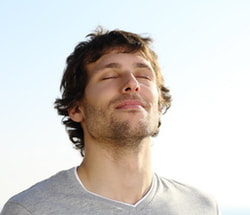 Through the nose, not the mouth...
Through the nose, not the mouth...
The Buteyko Method is a practice of respiratory rehabilitation by performing simple exercises. You can change the parameters in the concentration of organic gases and improve cellular oxygenation. The application of the Buteyko Method allows quick and easy way to restore the correct balance of physiological gases (carbon dioxide and oxygen) in the cells, in the blood and tissues. This condition allows the hemoglobin to release more easily the oxygen to the cells of the whole body, and thus ensure their efficient life cycle.
Proper cellular oxygenation therefore allows the body to "turn off" all the mechanisms of defense, very efficiently, have been been put on alert to avoid more serious damage, allowing regression of the phenomena at the origin of many diseases, illnesses and suffering.
For information click here.
Proper cellular oxygenation therefore allows the body to "turn off" all the mechanisms of defense, very efficiently, have been been put on alert to avoid more serious damage, allowing regression of the phenomena at the origin of many diseases, illnesses and suffering.
For information click here.
The Oxygen Advantage: The simple, scientifically proven breathing technique that will revolutionise your health and fitness. by Patrick McKeown (Buteyko Method)
Purchase from Amazon.co.uk
A neurological solution for muscle cramps. Interesting article on motorneurons. Click here.
Astounding Number of Medical Procedures Have No Benefit, Even Harm - JAMA Study. Click here.
Astounding Number of Medical Procedures Have No Benefit, Even Harm - JAMA Study. Click here.
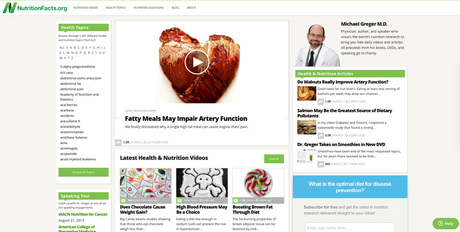
NutritionFacts.org
An interesting site for nutrition research.
Click here.
Greenmedinfo.com
Another interesting site for nutrition research.
Click here.
An interesting site for nutrition research.
Click here.
Greenmedinfo.com
Another interesting site for nutrition research.
Click here.
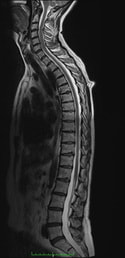
Tutorial MRI flash for students: Be curious, question orthodox thinking...
Below are T-2 mid sagittal MRI's of cervical and lumbar spine pathology of typical patients that you will see in clinic.
Q: What do you see? What would you do?
A: Assess, treat, reassess ... the whole patient. Not the image.
Below are T-2 mid sagittal MRI's of cervical and lumbar spine pathology of typical patients that you will see in clinic.
Q: What do you see? What would you do?
A: Assess, treat, reassess ... the whole patient. Not the image.
Bibliography: A few of my favorites...
Scott Haldeman, Principles and Practices of Chiropractic
Craig Liebenson, Rehabilitation of the Spine: A Practitioner's Manual
Karel Lewit, Manipulative Therapy in Rehabilitation of the Locomotor System
Vladimír Janda, Muscle Function Testing
Warren Hammer, Functional Soft Tissue Examination And Treatment By Manual Methods
Robert Frost, Applied Kinesiology, Revised Edition: A Training Manual and Reference Book of Basic Principles and Practices
Charles Sherrington, The Integrative Action of the Nervous System
Alf Breig, Adverse Mechanical Tension in the Central Nervous System
Alf Breig, Biomechanics of the Central Nervous System. Some basic normal and pathologic phenomena.
Stanley Hoppenfeld, Orthopaedic Neurology: A Diagnostic Guide to Neurologic Levels
David H. Durrant and Jerome Martin True, Myelopathy, Radiculopathy, and Peripheral Entrapment Syndromes
Janet Travell and David Simons, Myofascial Pain and Dysfunction, The Trigger Point Manual Volume 1 and 2
Stephen Foreman and Arthur Croft, Whiplash Injuries: The Cervical Acceleration/Deceleration Syndrome
C. Chan Gunn, The Gunn Approach to the Treatment of Chronic Pain: Intramuscular Stimulation for Myofascial Pain of Radiculopathic Origin
Craig Morris, Low Back Syndromes: Integrated Clinical Management
W.H. Kirkaldy-Willis, Managing Low Back Pain
Robert Becker, The Body Electric
Stephen Porges, The Pocket Guide to The Polyvagal Theory
Stanley Rosenberg, Accessing the Healing Power of the Vagus Nerve
Robert Scaer, The Body Bears the Burden
Bessel Van der Kolk, The Body Keeps the Score
Bruce Lipton, The Biology of Belief: Unleashing the Power of Consciousness, Matter, & Miracles
Candace Pert, Molecules of Emotion
Patrick McKeown, The Oxygen Advantage: The simple, scientifically proven breathing technique that will revolutionise your health and fitness
Scott Haldeman, Principles and Practices of Chiropractic
Craig Liebenson, Rehabilitation of the Spine: A Practitioner's Manual
Karel Lewit, Manipulative Therapy in Rehabilitation of the Locomotor System
Vladimír Janda, Muscle Function Testing
Warren Hammer, Functional Soft Tissue Examination And Treatment By Manual Methods
Robert Frost, Applied Kinesiology, Revised Edition: A Training Manual and Reference Book of Basic Principles and Practices
Charles Sherrington, The Integrative Action of the Nervous System
Alf Breig, Adverse Mechanical Tension in the Central Nervous System
Alf Breig, Biomechanics of the Central Nervous System. Some basic normal and pathologic phenomena.
Stanley Hoppenfeld, Orthopaedic Neurology: A Diagnostic Guide to Neurologic Levels
David H. Durrant and Jerome Martin True, Myelopathy, Radiculopathy, and Peripheral Entrapment Syndromes
Janet Travell and David Simons, Myofascial Pain and Dysfunction, The Trigger Point Manual Volume 1 and 2
Stephen Foreman and Arthur Croft, Whiplash Injuries: The Cervical Acceleration/Deceleration Syndrome
C. Chan Gunn, The Gunn Approach to the Treatment of Chronic Pain: Intramuscular Stimulation for Myofascial Pain of Radiculopathic Origin
Craig Morris, Low Back Syndromes: Integrated Clinical Management
W.H. Kirkaldy-Willis, Managing Low Back Pain
Robert Becker, The Body Electric
Stephen Porges, The Pocket Guide to The Polyvagal Theory
Stanley Rosenberg, Accessing the Healing Power of the Vagus Nerve
Robert Scaer, The Body Bears the Burden
Bessel Van der Kolk, The Body Keeps the Score
Bruce Lipton, The Biology of Belief: Unleashing the Power of Consciousness, Matter, & Miracles
Candace Pert, Molecules of Emotion
Patrick McKeown, The Oxygen Advantage: The simple, scientifically proven breathing technique that will revolutionise your health and fitness
Goodnight dr. Malinverno wherever you are.
